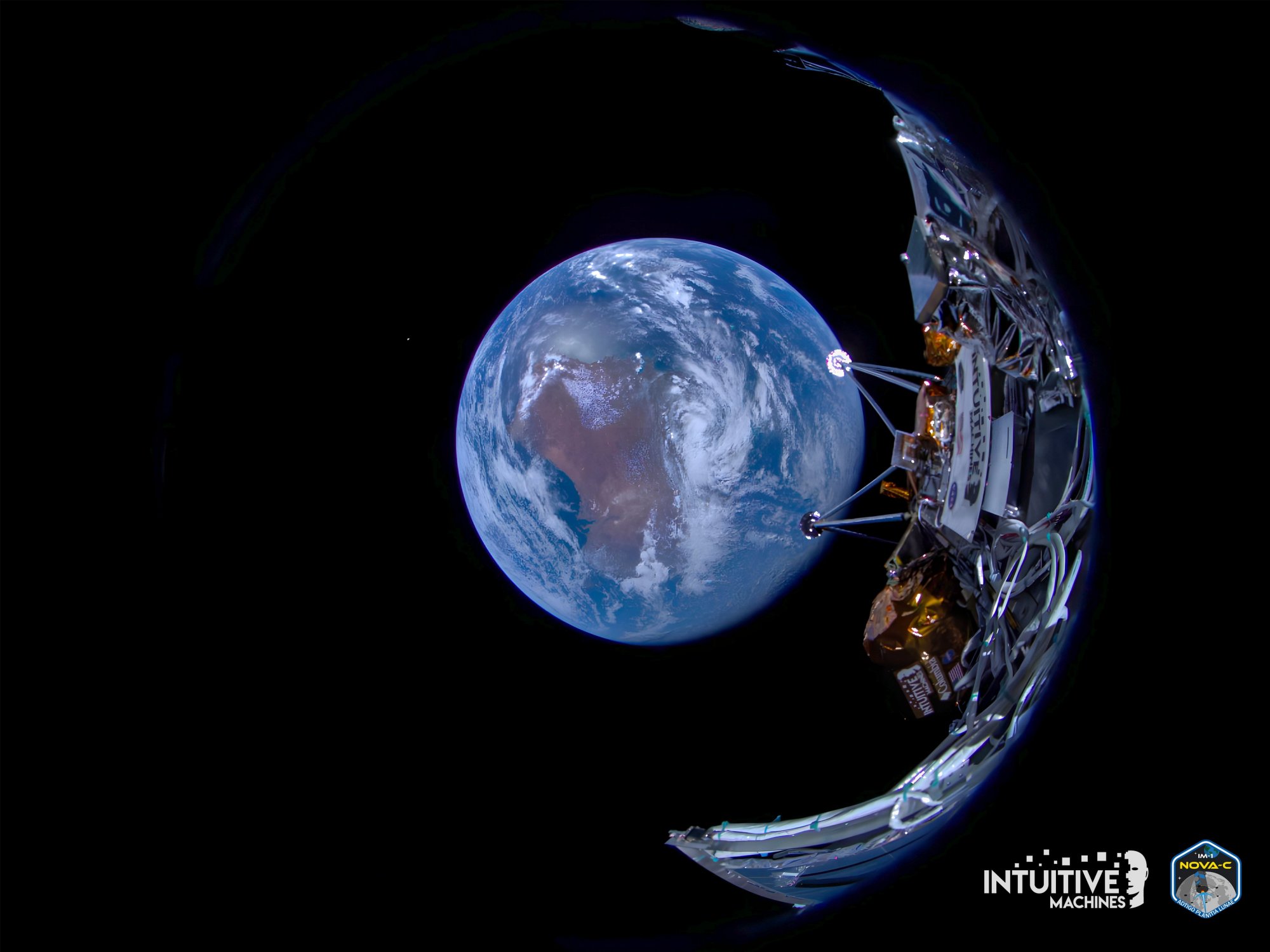
The robotic vehicle “Odysseus”, which made America's first landing on the moon in half a century, stumbled at the last moment and fell on its side, making it difficult to communicate with Earth.
This is the latest update from owner company Intuitive Machines, which also admitted that the mission was nearly disrupted due to human error, which was dealt with at the last minute with a temporary workaround.
Telemetry data from Thursday's landing indicated that one of the lander's legs either broke or hit a rock, causing the lander to land on its side and rest its “head” on a rock, Intuitive CEO Stephen Oltimos said.
However, all indications are that Odysseus is “grounded within or near the intended landing zone,” near Malapert A crater, about 300 kilometers from the moon’s south pole.
Odysseus took this picture of the moon from a height of about 10 kilometers (Intuitive Instruments)
On the plus side, the NASA science equipment that Intuitive Machines is tasked with carrying to the moon is on the exposed sides of the moon's surface and can work, according to Ultimus. Reuters Who attended the press conference.
Among other things, the lander plans to launch a robot capable of photographing it on the moon's surface, without specifying when.
“We hope to take pictures and proceed with the evaluation of the structure and external equipment,” the company's president told reporters.
He added: “So far we have sufficient operational capabilities, although we have retreated. “So it's really exciting for us as we continue to work on the surface,” he added.
He also said that two of the rover's antennas point toward Earth, which limits communication capabilities.
One of the solar panels is also facing the wrong direction and is not exposed to light, even though the batteries remain full thanks to the second panel
A pre-landing thriller
Intuitive Machines also revealed that the laser rangefinder that Odysseus would have used for the landing never worked because company employees forgot to remove the fuse before launch.
This was not noticed until a few hours before the planned descent to the surface, while mission technicians were investigating a different problem.
The rover likely would have crashed if engineers had not written new software to harness NASA's experimental lidar, a device that emits pulses of laser light and tracks reflections to calculate distances.
As mission director Tim Crane said at the press conference, Odyssey is expected to stop operating in about nine to 10 days, at which point the two-week frozen lunar night will begin.
Upcoming missions
The Intuitive Machines mission is carried out as part of NASA's CLPS (Commercial Lunar Payload Services Program) program, which provides for the transportation of service equipment by commercial vehicles.
Four more missions are scheduled for this year.
Last week's launch of Odysseus came a month after the loss of another private US company, Astrobotic Technology's lunar module, which suffered a leak in its propulsion system shortly after its January 8 launch.
This was the third failed attempt by a private company to land on the moon, after the failure of two previous missions by Israel and Japan.
Intuitive Machines' next mission is scheduled to land on the moon at the South Pole in 2024. A third mission will follow later that year, carrying a series of small robots.
Last month, Japan became the fifth country to land a spacecraft on the moon, after India's success in 2023.
The United States and Russia are the only other countries to do so. In 2019, China became the first country to achieve a controlled landing on the far side of the moon.

“Avid problem solver. Extreme social media junkie. Beer buff. Coffee guru. Internet geek. Travel ninja.”





More Stories
In Greece Porsche 911 50th Anniversary – How much does it cost?
PS Plus: With a free Harry Potter game, the new season begins on the service
Sony set to unveil PS5 Pro before holiday season – Playstation